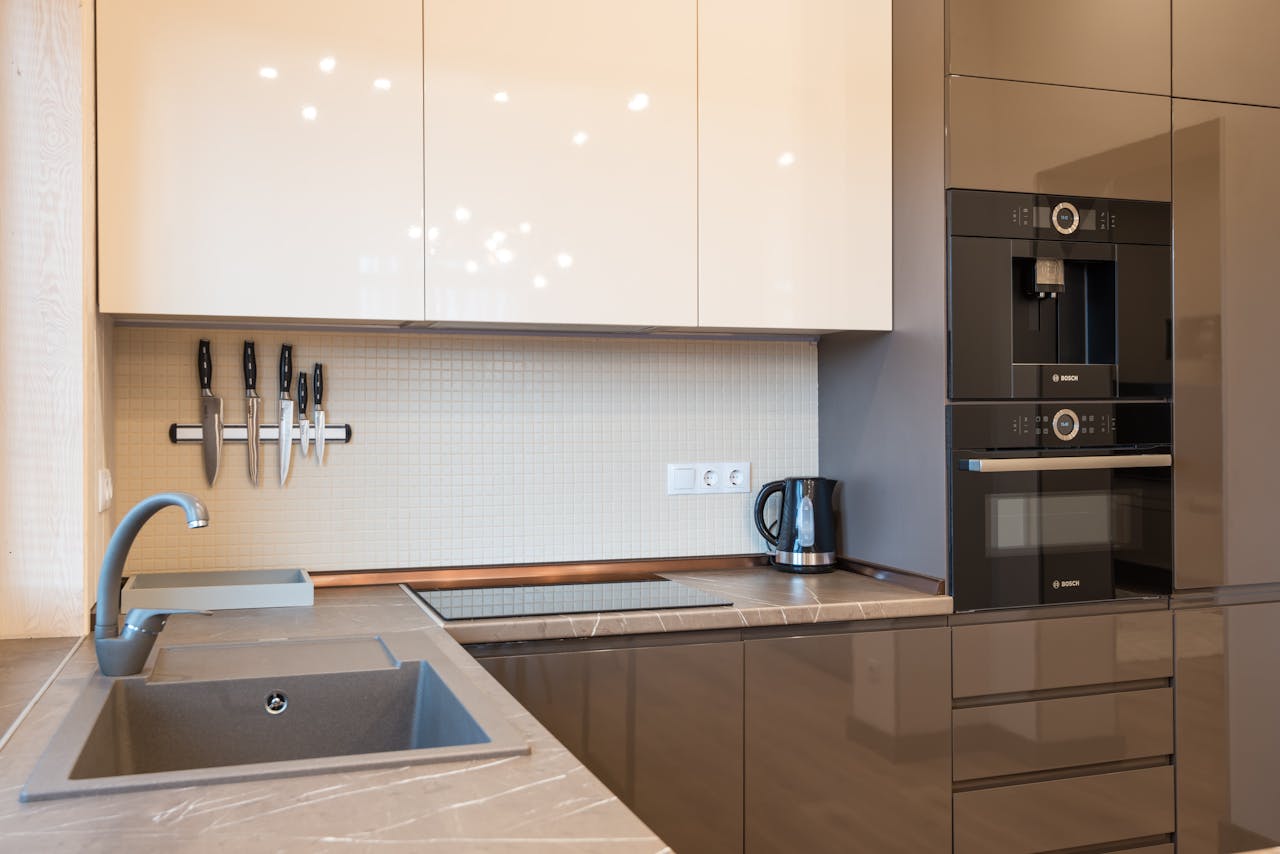Planning the design and setup of your kitchen can be a fun yet challenging task, especially when considering where to install electrical outlets. In today’s world, where appliances are the backbone of culinary endeavors, outlets are more imperative than ever. Placement can impact both the functionality and aesthetic appeal of your kitchen. This guide will help you understand how to plan electrical outlets for optimal convenience and power access.
Understanding the Basic Requirements
Before delving into the specifics, it’s essential to understand the basic requirements for kitchen outlets. The National Electrical Code (NEC) provides guidelines that ensure safety and efficiency in electrical installations. The code specifies the minimum number of outlets required, the maximum space between outlets, and the types of outlets for various appliances.
In the same genre : What are the current trends in kitchen cabinet hardware?
For instance, the NEC specifies that outlets should be installed so that no point along the wall is more than 24 inches from an outlet. This effectively means that you should plan for an outlet every 4 feet at the very least. Remember that these are minimum requirements and depending on your set of appliances and kitchen design, you might have to add more outlets.
It’s also crucial to factor in the power and circuit requirements of your appliances. For instance, larger appliances like refrigerators and dishwashers typically require dedicated circuits. Smaller appliances like toasters and blenders can share circuits but still need sufficient power.
Topic to read : What materials are best for a high-traffic kitchen floor?
Lastly, the NEC requires GFCI outlets (Ground Fault Circuit Interrupter) for kitchen outlets as a measure against electrical shocks. These are usually more expensive than regular outlets but are an essential safety feature.
Strategic Placement for Convenience and Safety
Strategic placement of your outlets will maximize convenience and safety in your kitchen. Having outlets within easy reach can make your cooking and cleaning tasks more efficient.
Start by considering where your main appliances will go. For countertop appliances, outlets should ideally be placed just above the countertop, about 4 to 6 inches up. This is to ensure easy access while preventing any liquids from spilling directly into the outlets.
For larger appliances like the refrigerator or dishwasher, the outlets should be placed behind them. However, ensure these outlets are easily accessible for servicing or in case the appliance needs to be unplugged.
Pop-up outlets are an innovative solution for islands or peninsulas. These outlets retract into the countertop when not in use, maintaining a sleek design while offering easy access when needed.
The Impact of Outlet Design on Kitchen Aesthetics
The design of your outlets can make a significant impact on the overall aesthetics of your kitchen. Modern outlets come in a variety of shapes, sizes, and colors, allowing you to match them with your kitchen style and color scheme.
Recessed outlets, for instance, sit flush with the wall and do not protrude. This design is especially beneficial if you want your backsplash to be the focus, or if you have tight spaces where appliances sit close to the wall.
Color-matching your outlets and covers with your backsplash or walls can make them blend in and appear less noticeable. Conversely, you can also choose outlets that stand out as a design element, adding to the overall aesthetic appeal.
Considering Future Needs
Finally, while planning your kitchen outlet placement, it’s wise to think about your future needs. You might not have many appliances now, but that could change in the future. Having more outlets than you currently need will provide flexibility for any new appliances you might acquire.
Also, consider adding USB outlets. With the increasing prevalence of smart kitchen appliances and devices, having a USB outlet can be a significant convenience.
To wrap it up, planning the placement, quantity, and type of kitchen outlets can seem like a daunting task, but with the right understanding of the requirements and considerations, you can create a kitchen space that is not only aesthetically pleasing but also functionally efficient. Keep in mind the basic requirements laid out by the NEC, carefully consider the placement for convenience and safety, choose outlets that complement your kitchen design, and plan for future needs. And remember, while you might be eager to get started, it’s always best to consult with a licensed electrician or contractor to ensure all installations are up to code and carried out safely.
Incorporating Outlet Spacing Based on Personal Experience
Drawing from personal experience, proper outlet spacing can greatly enhance the functionality and convenience of your kitchen. As mentioned earlier, the National Electrical Code (NEC) stipulates that outlets should not be more than four feet apart from each other. However, this is merely a minimum requirement. Depending on the design and appliance layout of your kitchen, you might need to adjust this distance.
If you regularly use countertop appliances, such as a toaster, mixer, or coffee maker, consider adding more outlets along the countertop. This will allow you to operate multiple appliances at the same time without constantly plugging and unplugging them. Similarly, if you have an island or a peninsula, pop-up outlets can be a handy addition. Retractable when not in use, they maintain a sleek design while providing power access where you need it.
For the larger, stationary appliances, ensure that the outlets are placed in easily accessible locations. Even though these appliances aren’t frequently moved, there will be times when you need to unplug them – for cleaning, servicing, or troubleshooting. In such cases, struggling to reach the outlet behind a heavy appliance can be a nuisance.
In summary, while the NEC guidelines provide a starting point for deciding outlet spacing, your personal experience and specific kitchen habits should also play a crucial role in your decision.
Contributions of Different Outlet Systems to Kitchen Power Accessibility
Different outlet systems can make significant contributions to power accessibility in your kitchen. As previously mentioned, pop-up outlets are an innovative solution for islands and peninsulas. But they aren’t the only options. Other types of outlets can enhance the practicality and aesthetics of your kitchen.
For example, under-cabinet outlets are a great way to keep your backsplash free from interruptions, allowing its design to shine through. These outlets are installed on the bottom of your upper cabinets, making them invisible when viewed from a standing position.
Similarly, in-drawer outlets are becoming increasingly popular, especially for charging stations. These outlets provide a safe and clutter-free way to charge your devices. They can also be used for powering small appliances like hair dryers or curling irons, keeping them out of sight when not in use.
Lastly, floor outlets are a good option for open-plan kitchens. They allow you to operate appliances away from the walls without running extension cords across the room. However, they should be waterproof and tamper-resistant to ensure safety.
These are just a few examples of how different outlet systems can enhance your kitchen’s power accessibility. Consider your specific needs and preferences when choosing the right outlet types for your kitchen.
Conclusion
Planning kitchen electrical outlets might seem like a minor detail, but it plays a pivotal role in the overall functionality and aesthetics of your kitchen. From understanding the basic NEC code requirements to strategic outlet placement, every aspect is crucial to ensure safety and convenience.
Incorporate personal experience into your kitchen power design to ensure maximum convenience. And remember, while the NEC provides a foundation, your kitchen habits and personal needs should ultimately guide where and how many outlets you install. Different outlet systems contribute in unique ways to your kitchen power accessibility. So, whether it’s pop-up outlets for your island or under-cabinet outlets for a smooth backsplash, choosing the right outlet types can significantly enhance your kitchen experience.
Finally, while the process can be overwhelming, remember that you are not alone. Consulting with a licensed electrician or contractor can provide much-needed guidance and assurance that your kitchen is up to code and safe. Planning kitchen electrical outlets is a crucial step in creating a kitchen space that is not just visually appealing but also optimally functional.






